Test on 146 foods and snacks to advise consumers on adequacy of iodine intake
Parental supervision is needed over their children in the consumption of food with high iodine contents.
The Consumer Council calls for particular attention to roasted seaweed. Among 146 food products surveyed by the Council, 6 brands of roasted seaweed have been found to contain comparatively high concentration of iodine. The average iodine concentration of roasted seaweeds is some 400 times higher than that of vegetables.
Depending on the brand of roasted seaweed, consumption of 7 to 8 small slices, or 2 small packages will exceed the WHO (World Health Organization) recommended daily intake of iodine for children under 12 years old.
As wide variations existed among the brands, with the highest iodine content being 9 times more than the lowest iodine content, consumers are advised to choose with care.
 |
 |
 |
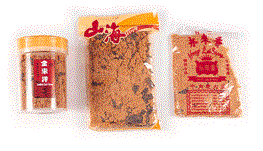 |
The test report, published in the latest (264) issue of its monthly magazine 'CHOICE', refers to a study that Chinese children in Hong Kong have a higher incidence of Hyperthyroidism (Graves' Disease) that may be associated with iodine intake.
The study is based on 2,439 secondary school students from 10 randomly selected high schools in Hong Kong.
Other studies focusing on different population groups in Hong Kong have, however, revealed the existence of iodine deficiency.
Goiter, a manifestation of Hyperthyroidism, may be induced by either too much or too little intake of iodine.
To inform the public on the adequacy of iodine intake, the Consumer Council has, in association with the Chinese University of Hong Kong, examined the iodine content of 146 food products including seafood, salt, seaweed products, meat, vegetables, eggs, soy sauce, milk and butter.
The test shows that roasted seaweed and dried seafood led the levels in average iodine concentration, followed by salt, seaweed crackers seaweed dried meat fibres, seafood, eggs, soy sauce, milk products, meat, butter and vegetables, in that order. Highlights of the test include:
- 6 brands of roasted seaweed have been found to contain comparatively high iodine concentration. Consuming 2g (about 7 to 8 small slices or 2 small packages) would have exceeded the WHO recommended daily iodine intake for children under 12 years old.
- But there is no need for undue panic if food of high iodine contents is consumed occasionally. The body could well adapt to such changes of nutrient intake.
- 3 milk products were found to contain a particularly high iodine content. However, as milk product is an important source of a wide range of nutrients, particularly for children, there is no suggestion that milk consumption in young children should be limited, but iodine content in milk should be monitored.
- The amount of iodine customarily consumed in a meal of some dried seafood, e.g. kelp (昆布), mussels (淡菜), seadragon (海龍) and seahair (髮菜) is much higher than the WHO recommended daily intake for children or adults. However, if these products are consumed only occasionally (i.e. once or twice per month), the body would be able to adapt and have the excess iodine excreted.
Nonetheless, a balanced diet is essential to health. People whose diet seldom includes seafood and milk and who may have iodine deficiency, are advised to consider using iodized salt in their food.
Modification of mobile phone handsets can be problematic
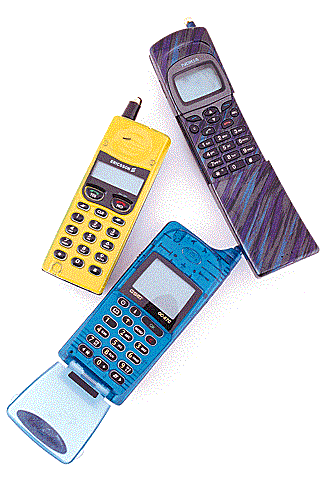
The Consumer Council has identified 4 problems which consumers modifying their mobile phone handsets may face.
Many consumers have been known to replace the body cover and/or antenna with substitute not of the original manufacturer. The problems with such modifications are :
- Many shops providing modification service don't have the competent technician and may even cause damage to the internal mechanism.
- Many body cover substitutes are made of brittle or poor quality material that could be easily broken and cause damage to the handset.
- The warranty provided by manufacturers or local agents will become void. The consumers will not be able to obtain repair service from manufacturers or local agents, whether or not the warranty period has expired.
- Original body cover and antenna are usually carefully designed to shield out interference radiation and provide the best transmission performance. Replacing them with other substitute may reduce the performance. Since the sensitivity can be lowered, the handset may easily be rendered inoperative in weak signal area.
Excessive soluble lead detected in baby feeding utensils - 1 feeding bottle and 2 training cups
The Consumer Council has conducted a test on 18 baby feeding bottles and 12 training cups to evaluate their safety, in response to parents' concern about peeling off of colourful prints of these utensils.
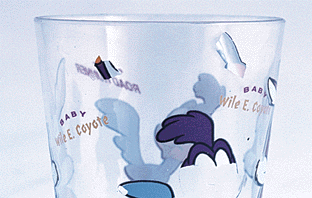

At least 3 samples - 1 feeding bottle and 2 training cups - have been found to contain excessive amount of soluble lead in the colours of the prints on these products.
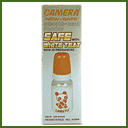 | 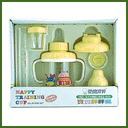 | 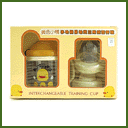 |
The most serious case is a training cup which has chromium, too. Its contents of 940 ppm lead and 210 ppm chromium are above the safety limits by 9.4 and 2.5 times respectively- based on the safety standard of the American Society for Testing and Materials(ASTM F963-96a).
Lead is harmful to health particularly to the development of young children. Parents are urged to consult the results of the test published in this October issue of 'CHOICE'.
The Council has referred the test findings to the Customs and Excise Department's Trading Standards Investigation Bureau for any action deemed necessary under the Consumer Goods Safety Ordinance.
In another development, the Consumer Council has found excessive lead in a non-stick pot.
This follows a consumer complaint that rice porridge cooked in the pot turned pink.
In a simulated cooking of rice porridge, it was found that the porridge began to turn pink once in contact with the blue surface of the lid.
Tests were conducted to detect the presence of heavy metals. The results revealed the presence of soluble lead of 130 to 150 ppm exceeding the ASTM safety standard of 90 ppm.
Besides soluble lead, the blue paint had a total lead content of 920 ppm which is also in excess of the safety limit of 600 ppm in the US Code of Federal Regulation (16CFR Part1303).
The pot in question was sold under the N'n Brand with diameter 20cm at the Park'N Shop at a retail price of $45.
According to the retailer, a total of 41 units of the product were sold by its Tai Po Centre Superstore from December 1997 to February 1998.
Following the advice of the Consumer Council, the retailer is voluntarily recalling the product on behalf of its supplier. Consumers are advised to cease using the product immediately and to return them to the Tai Po Centre Superstore for refund.
As a precautionary measure, the retailer also offers to recall similar pots of the same brand name of sizes 16cm and 18cm.




